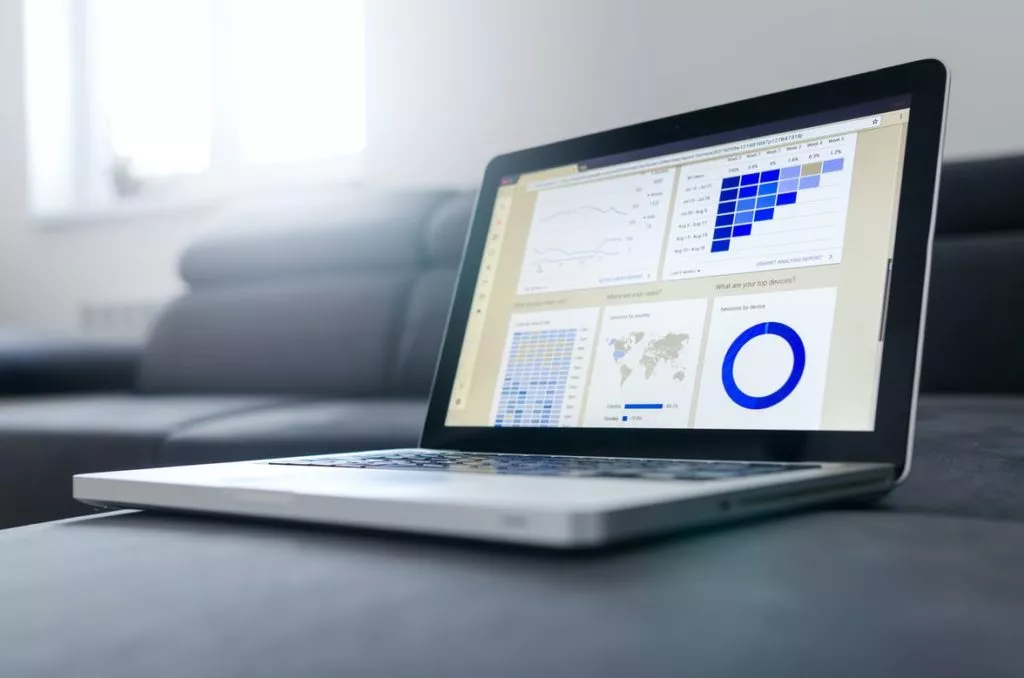If you are in front of a group of people, you want to make sure that the audience is drawn in by the first few minutes of your presentation. You want them to think that your message is important and that they want to hear more. And you don’t want them to feel lost or confused.
Data visualization is a critical skill for data analysts, especially those who are presenting to large audiences and the concepts are often difficult to explain. You want to make sure that you have a clear, well-structured message, and that your audience understands it.
In this article, we'll explore the basic concepts of data visualization and give you some simple tips and tricks to help you make your data visualization presentations more effective. We'll also talk about how to avoid common pitfalls that many people make when designing and presenting data visualizations.

The core concepts of data visualization
Data visualization is about presenting your data in a visually compelling way that grabs the audience’s attention, and communicates complex information to them in a simple and understandable way.
While a lot of this can be intuitive, if you're the type of person who easily breaks down information for others, it's still useful to brush up on specific data visualization skills that you can learn in a classroom setting.
Some of these skills include things like choosing the right visualizations to convey your information, choosing the right data sources, and creating meaningful, informative, and interactive visualizations.
The first few basic data visualization skills are easy to learn, and there are some great online resources that you can use to help you learn the basics. But, you should also consider taking a few classes to brush up on your data visualization skills.
Proficiency with data visualization software
Data visualization skills can be learned in several different ways, and the best way to learn them is to become proficient with data visualization software.
You need to fully understand what your software tool is capable of, compared to what you want to accomplish with your data presentations. For example, if you want to create a simple bar chart, but want to communicate the results of a complex study, then you might be better off with a simple interactive tool.
Thinking like your audience
This can be particularly challenging for people who are low in empathy-intuitiveness and being able to think like your audience is a critical skill to develop.
You want to think about the messages you want to communicate, and whether your data visualizations are likely to be understood by people in the audience.
If you are presenting to a group of people who don't know much about the topic you are discussing, you don't want to over-complicate your presentation by creating a complex data visualization. On the other hand, if you are presenting to a group of people who are extremely well-versed in your topic, you don't want to make it too simple by creating a simple bar chart.
Using compelling and relatable storytelling
Visuals have been a part of human communication for a long time, and they are a powerful tool for communication. But, just because visualization is visual doesn't mean that it has to be boring.
Storytelling and providing relatable parables is one of the best ways to communicate complex concepts, and it's a skill that can be developed as part of public speaking.
You don't have to be a creative genius to tell a story, but it does take some skill to be able to use storytelling to help your audience understand your data visualization.
TED Talks conference presentations are a particularly good example of how a simple story can be told to help people understand data visualization concepts. You'll notice that many speakers don't even use any visualizations in their presentations, but they are still able to explain the data to their audience through storytelling.
Data warehousing skills
Data warehousing is a powerful skill to have, and is definitely a core data visualization skill.
Data warehousing is the process of organizing, summarizing, and analyzing large volumes of data. It can be difficult to learn data warehousing skills, but it can be a very valuable skill for any data visualization professional.
Data warehousing skills include knowing how to create, maintain, and integrate databases and related tools. It is a process designed to facilitate business intelligence and analytics, and it is necessary for any data visualization professional.
A thorough understanding of chart types
There are many different types of charts and graphs to use for data visualization. For a beginner, it's a good idea to learn a few of the basic chart types.
For example, you might want to know the different types of bar charts, line graphs, bubble charts, and scatter charts. In addition to chart types, you will also need to learn how to create a variety of different types of charts, like bar graphs, pie graphs, line graphs, pie charts, and scatter charts.
There will also be more complex chart types, like stacked bar graphs, stacked line graphs, and stacked bubble charts. You need to design your data visualization around audience comprehension, so knowing your target audience, and their level of understanding with various chart types is critical.
A combination of artistic and mathematical skills
In the data analysis field, there are a few math skills that are especially useful, including probability and statistics, numerical analysis, and cluster analysis.
These skills can be used to create an appropriate visualization, but it also helps to know how to communicate your findings using visual language.
This is why it's important to learn how to use artistic methods, such as color theory, composition, and geometric design to help you communicate your findings.
Data visualization is a complicated field that can be intimidating for anyone who doesn't have a lot of experience with it. But, if you do a little research, and get the basic skills down, you can start learning more advanced skills, and you will be able to create some powerful data visualizations for your clients.
Alongside the typical skills you would need for data analysis, you need to really develop your communication skills, and your ability to read your audience. This is what separates data visualization from other types of graphic design.


